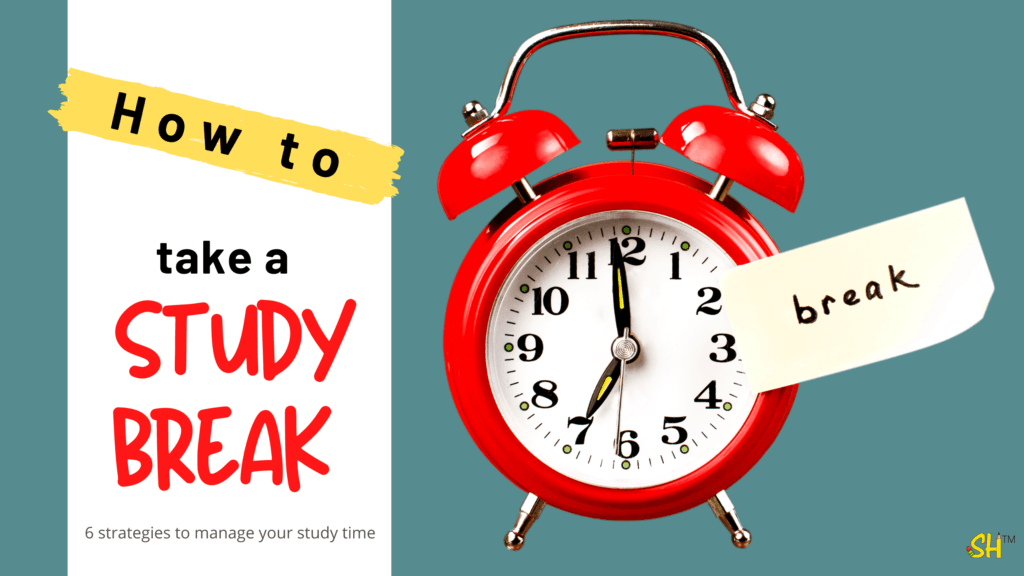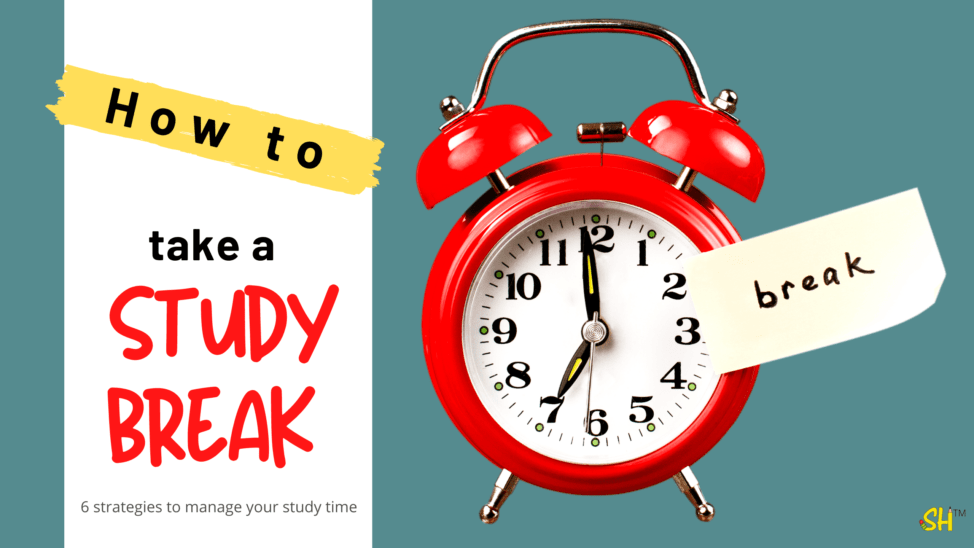
By Katie Azevedo, M.Ed.
I don’t recommend that anyone – no matter age or experience – study or work intensely for more than 90 minutes without taking a break.
And that’s on the longer side. For most people, I recommend doing homework or studying for no more than 45-60 minutes at a time before pausing to break.
One of the most popular methods I teach for how to take a study break is the Pomodoro Technique. You can watch my video about it here, read my blog about it, or listen to Ned Hallowell’s podcast (featuring me!) about it.
To use the Pomodoro Technique, you study or work for a set period of time (25 minutes), and then take a short, planned break (5 minutes). Repeat these intervals until the task is complete. This is a structured time-management tool that works especially well for those with ADHD or general distractibility.
If you’re not using the Pomodoro Technique, I still urge you to take a pre-planned and timed study break after 45-60 minutes. After this amount of time, our brains become less efficient at processing information. At this point, it’s time to take a break.
6 study-break strategies that save time and brain power
When we take a study break (or a homework or work break), we naturally disrupt our “flow.” Even a short 5-minute break can be long enough to cause us to forget where we left off before we stopped working. When we return from our breaks, we lose valuable time trying to figure out where we left off and how to begin again. This is not productive and it’s annoying – if you ask me.
The solution? Learn how to take a study break the proper way. The easy way. The way that works.
Here are some very simple strategies you can use to ensure that you are taking effective breaks from studying, and that you are returning to your work smoothly once your break is over.
1. Plan study breaks ahead of time. Managing your study and/or work time involves managing your breaks, so factor in your break-time before you begin studying. You could stop working after a specific period of time (like 45 minutes) or you could plan to stop after a particular point in your study/work session (like after reading Chapter 12).
It’s okay to veer from the plan a bit, but try to stick to the schedule. When you sit down to work, you should know how long you have ahead of you before it’s time to pause. This is good for your productivity – yes – but it’s also helpful for your mental space.
2. Take breaks at natural stopping points. You’ll have an easier time transitioning back to your work if you pause your work or study session at a natural ending point, such as the end of a chapter or the end of a smaller task. If you planned to work for 45 minutes but you have one more page to read when your timer goes off (you’re using a timer, right?!), then it makes sense to just keep going for one more page. Don’t stop mid-sentence just because your timer beeped.
3. Have a general idea of how you’ll spend your break. You’ll likely need a different type of break depending on what your “work” is. If you just spent 45 minutes staring at a screen, then I suggest not staring at a screen (I’m talking to you, Instagram) during your break. But if you just read and annotated a textbook for 60 minutes, then perhaps a social media break would be fine. Regardless, you should have a general sense of what you’ll do during your break so that you don’t spend half of your break time planning what you’ll do during your break time…
4. Leave yourself a Status Note. Before you get up to take your break (which reminds me to remind you … you should most certainly get up when you take a break), write yourself a Status Note so you remember where you left off and what you need to do when you come back. Don’t expect yourself to remember this information: write it down even if you swear you won’t forget. Don’t be fancy; sticky notes were invented for this exact reason. (Maybe. Sounds good.) Here is exactly how to write a Status Note.
5. Limit your study break time. You should have a definite end-time to your break; otherwise, it could turn into a permanent pause, which could turn into a Netflix binge … just saying.
For how long you take your study / work break depends on who you are, how you work, what you’re doing, how much time you have in your schedule, and about 27 other factors. To a degree, your break time should depend on your work time. In other words, the longer you work, the longer you could afford to break.
Typical work-break ratios are:
- 25 min work: 5 min break
- 45 min work; 10 min break
- 60 min work; 15 min break
Play around and see what works. If you don’t experiment, you won’t know.
6. Before the break, prepare for after the break. Before you get up for your break, set up your work-space with everything you’ll need when you return. If you’re switching tasks after your break, lay out your new materials, open up the correct documents and/or websites, etc., so that you can jump right back into productivity when you resume your work.
Final notes on how to take a study break
No matter how studious or gung-ho you are, you need to take a break from your work once in a while. Pausing to re-calibrate yourself is good not only for your productivity, but also for your motivation and mental endurance. But with that said, don’t wing it. Don’t just take your study breaks when you feel like it. Be thoughtful about your time — and then you’ll be in charge of it.
Want more on this topic? Learn how to recognize that signs that it’s time to stop studying.

